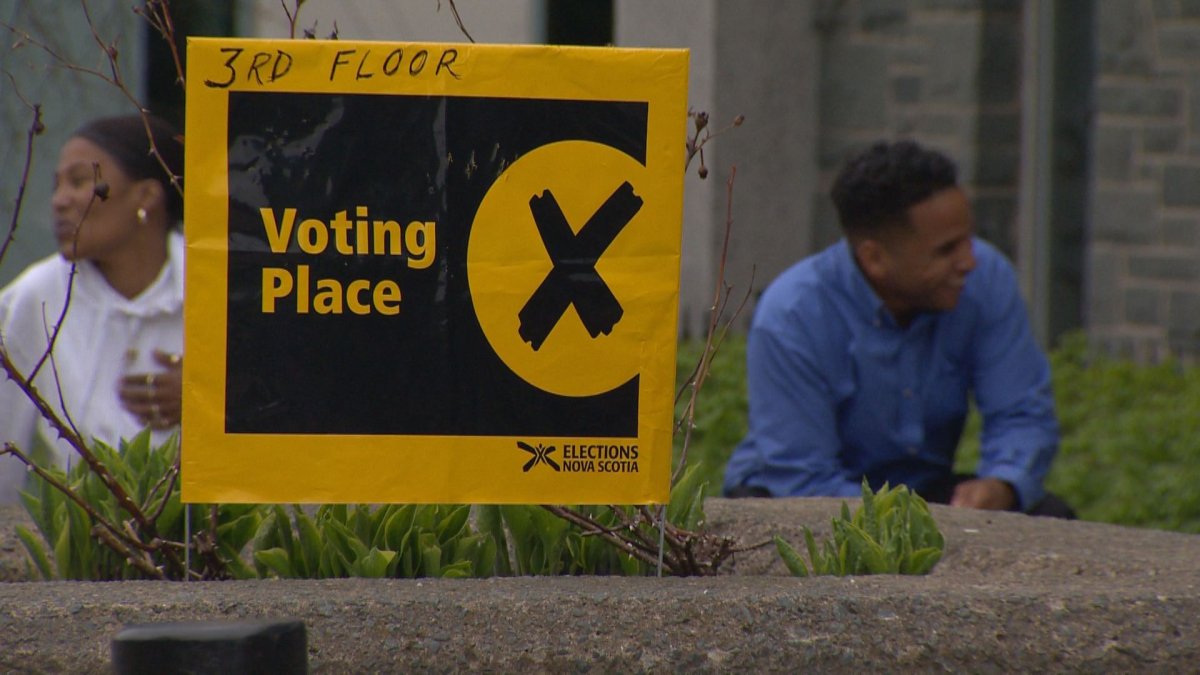When voters in Nova Scotia head to the polls on Aug. 17, it will be the fifth time a provincial election has been held during this pandemic.

Not surprisingly, having an election during COVID-19 has brought about some changes in the way campaigns and voting are conducted.
And there are some concerns it could have an impact on voter participation.
“Trying to predict what the voter turnout will be this time around is a guessing game,” said Louise Carbert, a political science professor at Dalhousie University.
Take Newfoundland, for example, where in-person voting was eventually cancelled due to a surge in cases. Preliminary figures put voter turnout for the March election at 48 per cent, which was a historic low for that province.
It was the same story in British Columbia, which held a general election in October 2020. The estimated turnout was pegged at 54.5 per cent, which was a new low for the province.
It’s not an isolated problem, and it was happening well before COVID-19.
Elections Nova Scotia’s report following the last general election in 2017 noted that despite offering more early voting opportunities, turnout has been waning since the 1980s.
When John Buchanan was elected to a fourth term as premier in 1988, 75.8 per cent of eligible voters in Nova Scotia showed up at the polls. That number dropped to 69.5 per cent in 1998, an election that saw Russell MacLellan’s Liberals hang on to power with the slimmest of minority governments. By the time Darrell Dexter led the NDP to its first-ever election victory in Atlantic Canada in 2009, only 57.9 per cent of voters cast ballots.
Despite a slight increase at the polls in 2013 when Stephen McNeil’s Liberals ousted Dexter’s New Democrats, a historically-low turnout — just 53.4 per cent of eligible voters — elected McNeil to a second consecutive majority four years later.
This was regardless of the fact that a “variety” of early voting options had been brought in for the 2017 election, including advance polls, community polls, write-in ballots and mobile polling stations.
And no, the time of year doesn’t seem to make a difference, either. The decline in turnout is consistent with each election, regardless of the season.
“You might think that it makes intuitive sense that voter turnout would be lower in the summer when people are travelling, visiting, and otherwise tuning out the political news,” Carbert said.
“But that hasn’t been the case in recent decades in Nova Scotia.”
‘Not interested in politics’
So why are some people choosing not to vote?
It’s an important question not just in this provincial election — but also as talk of a possible federal election looms.
To put it simply, they’re not interested.
According to a Statistics Canada survey on the October 2019 federal election, “not interested in politics” was the top reason for not casting a ballot that year, with 35 per cent of non-voters citing it as their main reason.
Federally speaking, voter turnout has fluctuated but is also generally on the decline. The September 1984 election saw a 75.3 per cent turnout, and has dipped as low as 58.8 per cent in 2008, before sitting at 67 per cent in the last election in 2019.
The authors of the survey noted that while “everyday life issues,” such as being too busy, were the most common reasons cited by non-voters in British Columbia, political reasons including “not interested in politics” was most prevalent in Nova Scotia.

Carbert echoes these findings, saying that turnout really depends on how engaged people are with today’s political issues, and the differences in how the major parties approach them.
Aside from apathy, experts say potential voters are also being turned off by the way election campaigns are conducted.
“I think Canada, like other Western democracies, is experiencing a trend in politics where people are feeling pushed away instead of feeling drawn in,” said Sabreena Delhon, the executive director of The Samara Centre for Democracy.
The non-partisan charity has a goal of making Canadian politics more accessible and inclusive through programming and research.
Delhon said the dialogue, especially on social media, can become “very narrow, ugly and highly partisan.”
“And that’s a key factor in the voter engagement situation,” she said.
“When the online political discourse has a toxic quality to it, people feel intimidated, unsafe or even bored, they tune out.”
She said the solution is for parties to “elevate the level of dialogue” to make it more engaging and inclusive.
Failing to do so, Delhon says, risks people turning their backs on the political process.
“And once that’s gone, it’s much, much, much harder to win back,” Delhon said.
“So the notion of a federal election, Nova Scotia’s upcoming election, those provide opportunities to try something different.”
Could COVID-19 actually make us more engaged?
While those organizing elections and campaigns have given a lot of consideration to COVID-19 in terms of safety protocols, there’s also an opportunity for the pandemic to drive up engagement.
“Over the course of the pandemic, we’ve relied on the public heavily to wear masks, to get vaccinated, to follow public health protocols, to take care of their communities. And they have shown up,” Delhon said.
“So it will be interesting to see how that manifests at polls because they are engaged like never before.”
Carbert agreed, saying the ever-changing regulations, travel restrictions and vaccination roll-outs have more people paying attention to the decisions made by government.
“This engagement could encourage higher voter turnout, both among older voters who are most at risk, and among younger voters who are most affected by restrictions on mobility,” Carbert said.
“But so far, the three major parties’ approaches (in the Nova Scotia election) to these issues don’t seem to have been sharply different enough to particularly mobilize their supporters over those of other parties.”
Who is voting?
With all the attention paid to courting young voters, it’s no surprise that the youngest demographic is the toughest to reach.
Elections Nova Scotia’s stats from the 2017 election show that the highest rate of participation was in the 65 to 74 age group. Participation decreases with each age cohort, with the lowest participation among the 18 to 24 age group.
“Certainly for young people, there’s a sense that political parties aren’t making an effort to connect with them and that they’re really not looking to engage it in a way that is of a relevance and connects with that particular demographic,” Delhon said.
While political candidates and parties have been making a noticeable effort to reach younger voters, whether it be including younger candidates on the ballot or using new social media platforms like TikTok, Delhon said it’s important that these actions seem genuine.
“I think it’s great that political parties are trying new ways to engage different demographics. I think what needs to underpin their efforts is a sense of authenticity. And if it’s not there, it’s going to be blatantly obvious for the target audience and it’s going to do more harm than good,” she said.
Carbert said that studies have shown over the years that non-voters tend to be younger and “more mobile.”
This is particularly striking in this election, because affordable housing is a major election issue, and it affects this demographic greatly.
“Will this issue motivate more young people to vote this time? It’s going to depend, in part, how the parties speak to them about the cost of housing, and if they speak differently from each other about it,” she said.
The consequences of low turnout
“In the long term, and in the big picture, declining rates of voter-turnout are a cause for concern,” Carbert cautioned.
The big question, she added, is how concentrated or alike are the non-voters?
“If non-voters are concentrated in one particular demographic group or one particular geographical part of a riding, the result could be a less representative and less legitimate legislature,” she said.
“And if a policy dispute arises that is relevant to that particular population of non-voters, who would speak for that policy in the House? Is there a political party that would take up an issue on behalf of those non-voters?”
Delhon pointed out low voter engagement also tends to be among newcomers to the country and visible minority groups.
“It’s likely that they have a tenuous sense of belonging within Canadian society and the sense of unease occupying space and in the political community,” she said.
“There’s a lot of overlapping variables here, and it really does perpetuate the cycle of low turnout and voting being something that just a smaller and smaller group of people in Canada are doing, which is really unfortunate for the health of our democracy and has major repercussions in terms of representation and inclusion.”




Comments